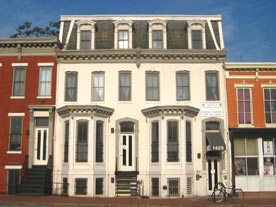Carol Wayman, federal policy director of the Corporation for Enterprise Development argues in the latest issue of Shelterforce that while community economic developers understand the need to leverage every dollar, the benefit Federal Home Loan Banks Federal Home Loan Banks’ lackluster economic development lending performance could be improved by following the model of their own Affordable Housing Program
Specifically, Wayman writes, the FHLBanks’ Affordable Housing Program (AHP), which requires each of the 12, independent, regional banks to set aside 10 percent of annual profits to invest in local affordable housing initiatives, can serve as a model for expanding the country’s economic development system:
“The results have been incredible positive, with more than $4.2 billion in grants administered since 1990, creating more than 700,000 units. The program has been the ‘crown jewel’ of the system as it brings strong housing development proposals together with appropriate financing. AHP is the largest source of private funds available for affordable housing in the nation.”
“In this time of overwhelming budget cuts, high levels of unemployment and global economic change, a long-term, significant funding source that brings together community development organizations, local governments, and the financial sector could play a crucial role to building a stronger, more inclusive economy.”
Wayman points to some of the economic development headway made by FHLBanks, but in order to get there, that is, to improve FHLBanks’ economic development investment, she champions the banks’ improved oversight of community lending plans, have local governments and organizations take part in the FHFA-required Community Support Review, and implement an economic development version of AHP:
“The best way to increase investment in community economic development is to mandate it, using the AHP model—setting aside a percentage of FHLBanks’ annual profits for investment in community economic development projects identified by member financial institutions…. An economic development version of AHP would feature the same type of annual competition for grants that has successfully increased the banks’ affordable housing investments. Submitting proposals together encourages local nonprofits, governments, and tribes to build reliable partnerships that can work together over a period of years. Bringing financial institutions to the table early in the process allows the partners to adapt and respond to lenders’ interests and concerns, enabling projects to attract greater financing later.”
Wayman includes a sidebar, Economic Development at FHLBanks, that offers up examples of good economic development financing from FHLBanks such as: a community space in Washington, DC’s Shaw neighborhood; a permanent, year-round farmers’ market for low-income farmers and entrepreneurs in Nevada; the redevelopment of vacant commercial property into mixed-use development in Worcester, Mass.; a series of loans given to small businesses in Wisconsin. But those examples are disappointingly low for a GSE that gets benefits from its semi-public status,
“The best way to increase investment in community economic development is to mandate it,” writes Wayman, “using the AHP model—setting aside a percentage of FHLBanks’ annual profits for investment in community economic development projects identified by member financial institutions.
Article: More Mission
Photo courtesy of Flickr user Rock_Creek, CC BY-NC-SA





Comments